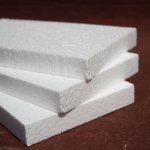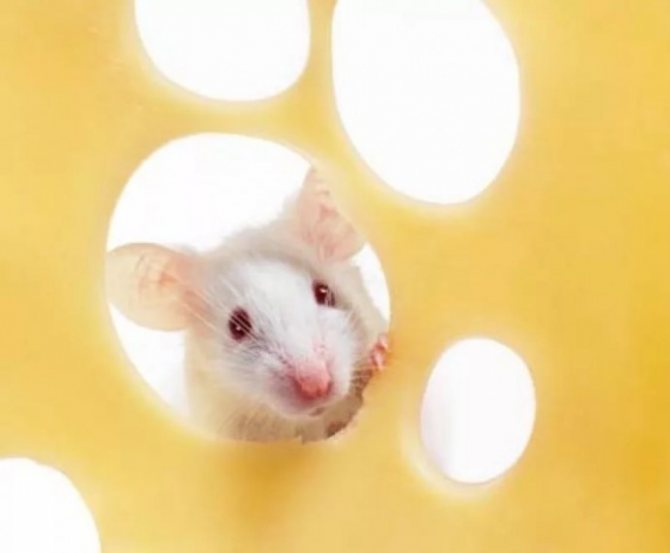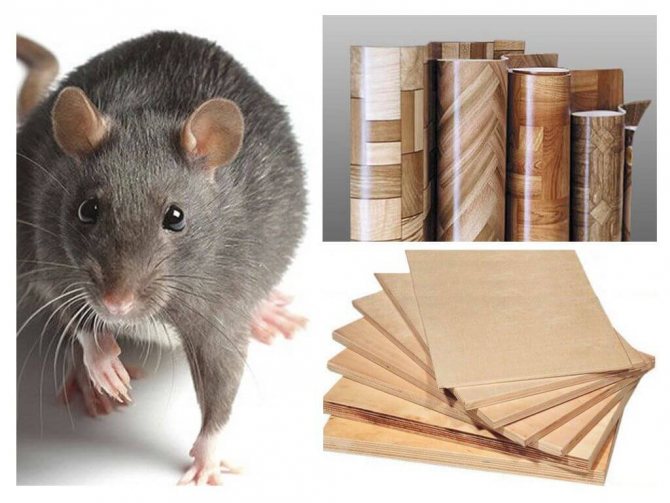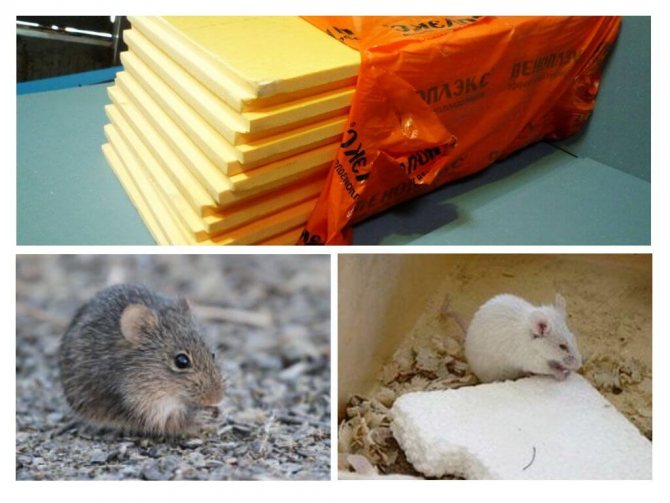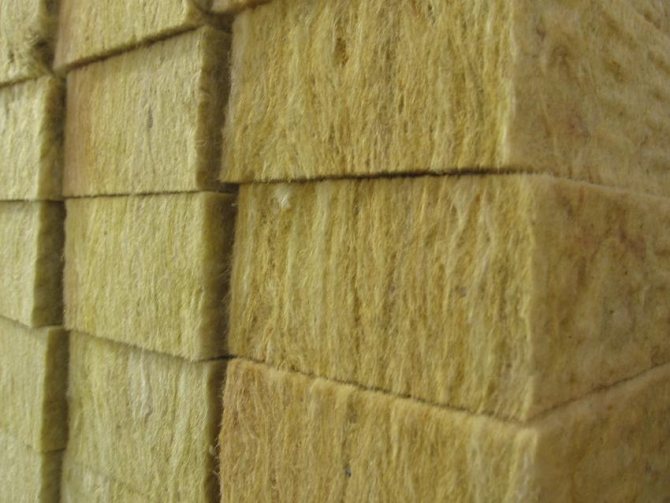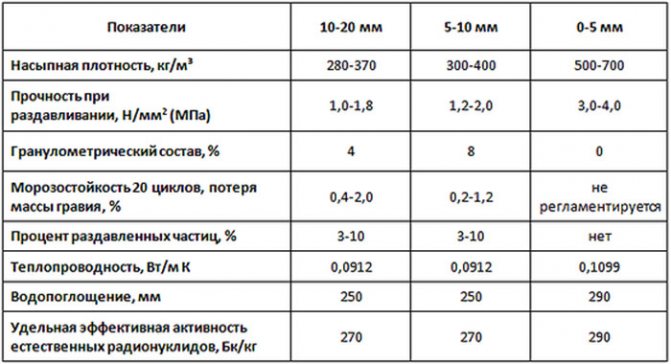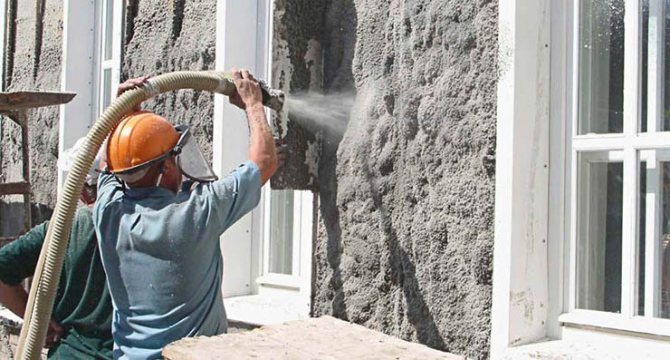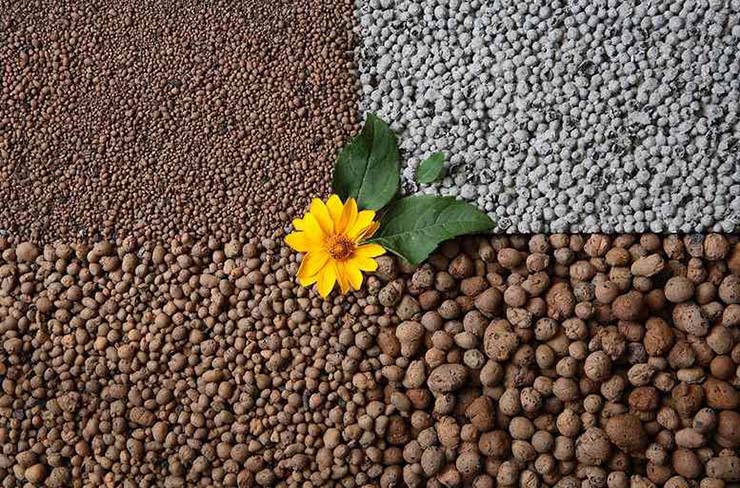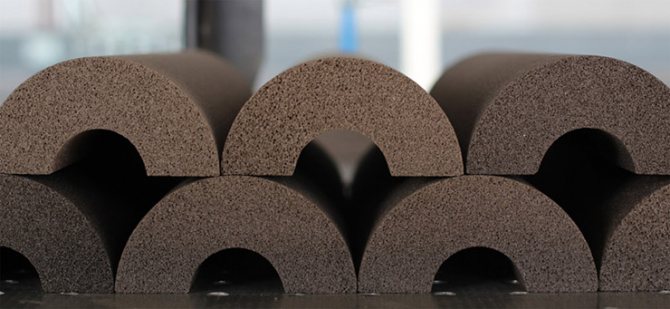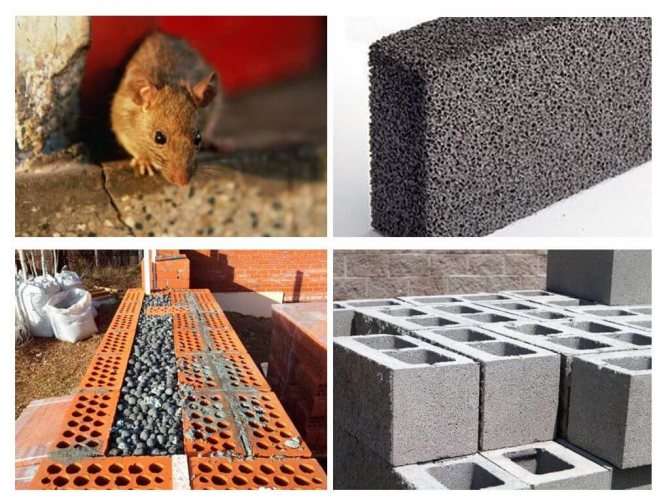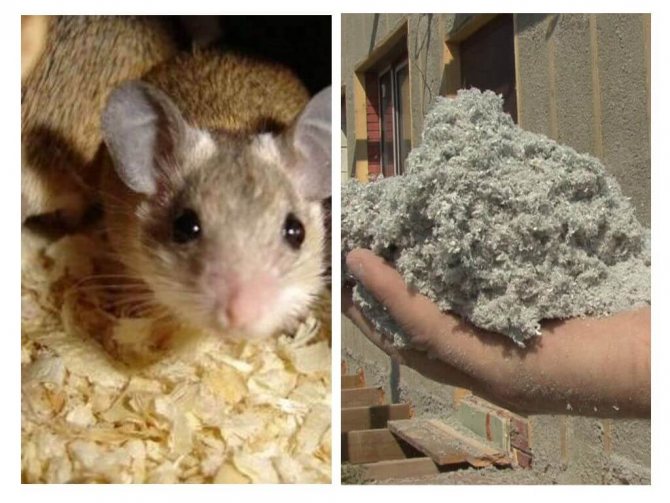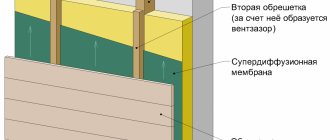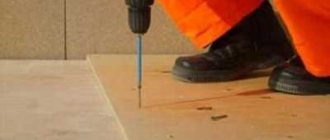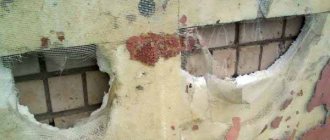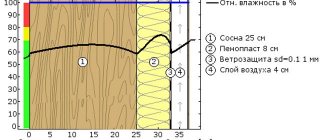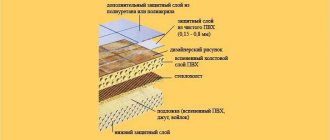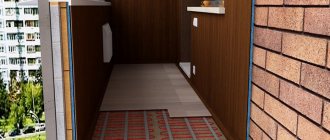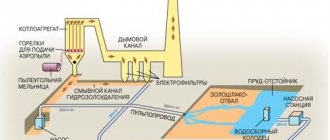What insulation do mice and rats prefer?
Rodents' favorite materials are those that are suitable for creating nests and are easily crushed, which is not an obstacle to entering the house. They allow them to sharpen their incisors as they grow throughout life and need to be ground regularly.
Pests do not consider any insulation material as food. They gnaw not because they want to satisfy their hunger, but only to eliminate the obstacle on the way to food and vegetables in the room.
Volatile materials
The love of pests for insulation is fully justified. This type of material is suitable for arranging nests and passages in it.
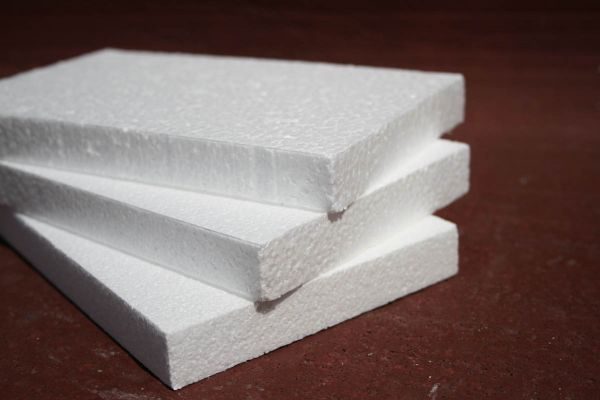
The main types of unstable thermal insulation layer:
- Styrofoam. Available and demanded insulation in the form of separate plates, with a low level of thermal conductivity. For the teeth of mice and rats, it does not represent a serious obstacle. They instantly damage its integrity and arrange inside not only nests, but also whole labyrinths of moves.
- Glass wool. Not as attractive as the previous one, but still does not rot, retains heat and shape, and is characterized by good ventilation. The irritating effect of glass wool is not capable of scaring these animals away.
- Penoplex. It is characterized by a denser structure than polystyrene, as it is highly resistant to moisture. They are used for insulating attics and basements. But its properties do not prevent the invasion of mice and rats. Over time, nests, passages, manholes and labyrinths of animals will appear in it.
- Foamed polyethylene. Its basis is foamed cellophane, covered with aluminum foil on both sides. Prized for its moisture resistance. It is used to insulate interior walls. Not able to resist pests.
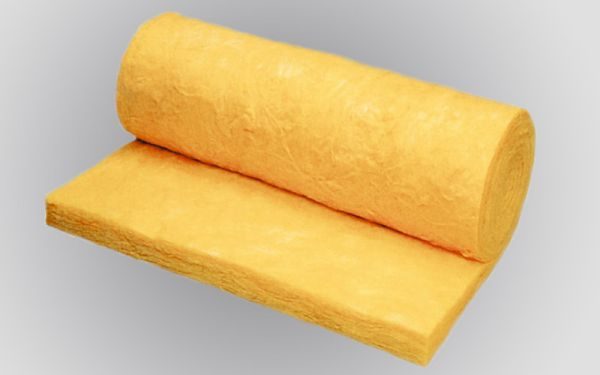

Rodents - what is the threat?
Rodents in the house are always a problem, and significant in several aspects at once.
- Rats and mice are simple unpleasant neighbors and many people are also terrified of them.
- They may be carriers of diseases dangerous to humans - for example, hemorrhagic fever with renal syndrome, leptospirosis, rabies. Moreover, the source of infection is not only the mice and rats themselves, but also their natural secretions, which they carry around the house and area.
- Rodents spoil property - starting with food supplies and ending with the actual house in which they settled.
What kind of insulation mice do not gnaw
Pests easily damage materials with a low level of density and having a fibrous structure. To maintain the integrity of the thermal insulation, it must be dense, rigid and, if possible, have a surface protective layer.
Not to the liking of rats and mice is also insulation, consisting of porous substances enclosed in a dense shell. Rodents are able to gnaw a hole in them, but they will not settle down. It will not be difficult to restore thermal insulation.
Sustainable materials overview
There are several types of insulation that mice cannot gnaw. To avoid the cost of restoring thermal insulation, you need to choose materials that are resistant to damage.
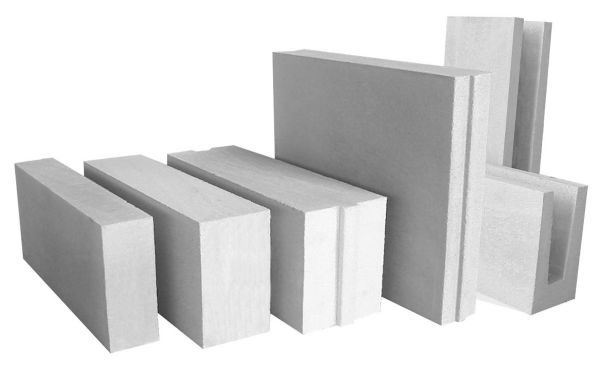

The main types of insulation that can withstand the invasion of pests:
- Foam concrete. Differs in a cellular free-flowing structure, in its characteristics it resembles aerated concrete. The basis is sand, water, cement, foaming agent. During construction, block cavities are filled with them. The specific gravity is significantly less than that of concrete.
- Foam glass. Expensive material with a guaranteed service life of 100 years. It is based on waste glass foamed with a carbon mixture. The finished structure consists of tightly fitting cells.
- Expanded clay. It is a round porous fraction obtained by firing clay. It is used for thermal insulation of roofs, foundations and as a filler for dry floor screed. The diameter of expanded clay granules varies from 0.5 to 4.5 cm, movement in them is difficult for rodents.
- Ecowool. An innovative and expensive type based on cellulose fibers. It is applied with a special device, and after hardening, the surface is leveled with a roller. The presence of orthoboric acid in the composition causes suffocation and dehydration in rodents.
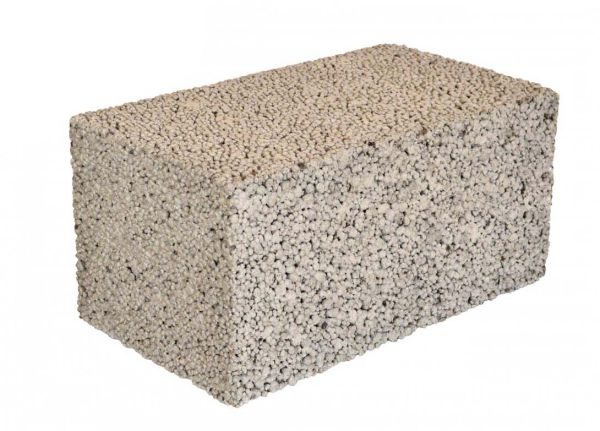

"Inedible"
Materials that are more or less unsuitable for rodents, do not lend themselves to their teeth, or are simply not attractive. These are materials that should be taken as a basis in homes where there is a high risk of being colonized by mice or rats, and there is no way to get rid of them once and for all.
Rodent resistant materials:
- foam glass, foam ceramics;
- foam concrete, aerated concrete;
- expanded polystyrene concrete;
- expanded clay;
- vermiculite;
- perlite;
- ecowool, cellulose insulation;
- flax fiber mats;
- drywall.
The first three points outweigh the rodents only by their durability. Partially cellular concrete can be damaged by rats. They even manage to gnaw through ordinary concrete if necessary, but they will not be able to significantly harm the insulation or settle in the aerated concrete insulation belt.
Foam glass is the most durable and strong material of all presented and is not gnawed even by particularly stubborn rodents.
Expanded clay, perlite and vermiculite have two factors that protect them from the attacks of mice and other animals. Firstly, these are inorganic compounds, minerals and burnt clay, which do not arouse any interest in small pests. Secondly, these are often bulk materials, in the thickness of which it is impossible to settle for a long time. The verdict in this case is unambiguous: even if mice appear in the house, they will not be able to settle for a long time.
Vermiculite, in addition to the above, is a good absorbent of odors, so that the marks that mark the territory of the rodents will constantly disappear, which will also eventually force the pests to leave the territory.
Rodents spoiled the foam
Unexpected is the inclusion in the list of "inedible" ecowool. It is essentially pure cellulose that mice and rats and a host of other pests can digest. However, they don't actually touch this material. It's all to blame for the obligatory processing of ecowool and inclusions. To protect against organic damage, rot and bacteria, orthoboric acid (borax) is added to the pulp, which is a powerful antiseptic. In rodents, it causes severe dehydration of the body, which actively counteracts against settling in the thickness of the insulation.
Linseed fibers have their own natural filler that can repel rodents - lignin. The effect is about the same as in the case of borax, only in this case everything is bypassed with natural ingredients.
Drywall is included in the "inedible", but it is only partially so. There are no limits for damage by rodents to the cardboard, which is pasted over the material, however, gypsum, which contains a large amount of lime, repels pests. Rats are capable, with a strong desire, to gnaw through a drywall partition and even damage the profiles, so in this case the main task is not to leave the rodents with good reason to spoil the drywall.
How to protect insulation from rats and mice: 4 ways
Pest-resistant materials are expensive, which significantly increases construction costs.Therefore, you can use the usual types of thermal insulation for warming, but take care of additional protection from the invasion of pests in advance.
What will help protect your home from uninvited guests:
- Basement profile. It is a metal strip that needs to be mounted in the bottom row. A heat-insulating layer is installed on top, so its edge is reliably protected from rodents. This method can withstand moderate pest attacks.
- Metal grid. Installation is carried out over thermal insulation. It is important that the cross-section of the mesh is frequent and small, and the wire diameter is at least 2 mm. This method is reliable for home protection.
- Plastering the heat-insulating surface. Application on top of special facing mortars makes it possible to strengthen the outer layer. After hardening, the finishing surface becomes dense and durable, which is a protective barrier.
- Poison and ultrasonic devices. If holes and labyrinths are found in the insulation, it is necessary to put special chemicals in them, such as "Mortorat", "Rat Death". And to prevent repeated invasions, use special ultrasonic repellents, including them in the most dangerous periods of the year - in autumn and winter.
What not to choose
So, the greatest pleasure for rodents is provided by natural insulation and foam. Insulation based on mineral and basalt wool will not stop them either. All these heaters are soft, so it is quite easy to "deal" with them. Given the significant soundproofing, it will be difficult to immediately hear the presence of mice.
The only way to protect the space between the wall and the insulator is to use solid insulation. However, aerated concrete and the company have one significant drawback - they can be used only at the stage of building construction. And on top of that, they conduct heat well, so they are rarely used.
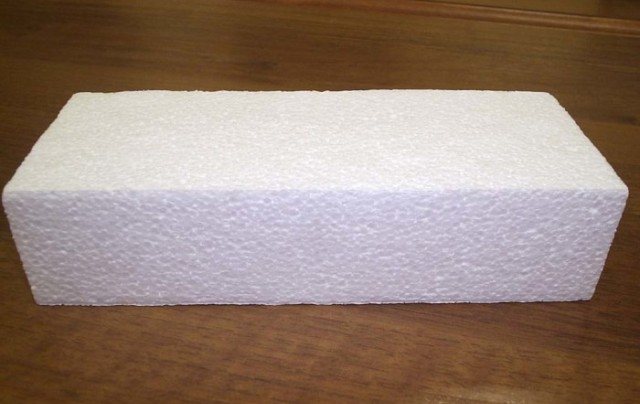

Another solution to the problem is inflatable insulators led by penoizol. Mice do not eat them at all. However, due to the insignificant amount of work, the cost of insulation can increase several times compared to alternatives. But its plus is that they can be insulated both during construction and at the stage of building operation.
What kind of insulation should not be chosen when the mice have already started up
If pests have already appeared in the house, then you should not use materials that have a light porous structure for insulating a home. It will be a waste of money and effort.
Such materials include:
- penoplex;
- foamed polyethylene;
- Styrofoam;
- expanded polystyrene;
- glass wool.
To use these species, you first need to get rid of the pests, and only then carry out the installation using protective materials.
Insulation that resists rodents
There are a number of signs by which mice choose insulation material: low density, lack of moisture, warmth, and the possibility of being used as food. Therefore, to protect against rodents, these factors must be excluded.
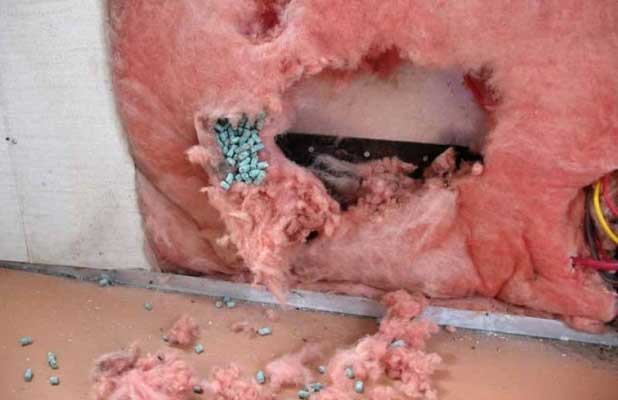

Insulation that can withstand attacks from rats and similar animals must have the following properties:
- High density index. This is the main obstacle for rodents.
- Processing with special agents, the concentration of which is safe for human health.
- Loose insulation structure. It prevents pests from making nests in the material.
These requirements are met by a number of heat insulators, which need to be considered in more detail.
Foam glass
For the manufacture of foam glass, glass breakage is used, which passes the stage of heat treatment. To create voids, foaming agents are added - anthracite, coke. In the future, the formed hollow granules can be used as bulk material.To make blocks, they are poured into molds, and then subjected to pressure and re-processing at high temperatures.
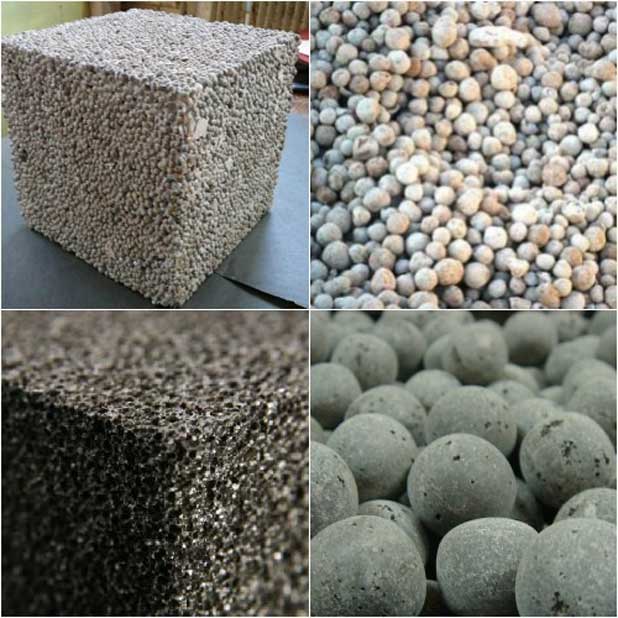

When choosing foam glass as a heater, you need to take into account its properties (see all characteristics here):
- Large specific gravity. Depending on the manufacturing technology, the density of the material varies from 100 to 600 kg / m³. This is a high figure, which negatively affects the conditions of installation and processing.
- The thermal conductivity coefficient is one of the lowest among heaters - from 0.043 W / m * C. For bulk types of foam glass, it is higher, since there is no tight contact of the granules with each other.
- Fire safety and sound insulation. They are due to the properties of the material of manufacture and its structure.
- High price. The average price for 1 m³ of block foam glass is 17,500 rubles.
This insulation is chosen if the problem of rodents is urgent and a high degree of protection against them is required.
Expanded clay
Expanded clay is made from special types of clay using a technology similar to foam glass. But unlike it, the formed granules cannot be pressed into a single block, since they have low mechanical strength and elasticity. This insulation is not gnawed by mice and rats due to its flowability.


To analyze the relevance of using expanded clay, its characteristics are taken into account:
- The nominal thermal conductivity for one granule is from 0.01 W / m * C. But in fact, for a layer of expanded clay, it is higher, since "cold bridges" are formed between the components. It all depends on the density of the backfill.
- The compaction ratio is 1.15.
- Fraction 10-20. It is this granule size that is used for insulation.
- Water absorption from 8 to 20%.
- Average cost - from 1300 r per 1 m³.
Expanded clay can only be used as bulk insulation on horizontal surfaces.
Ecowool
It is made from waste paper industry. After processing, ecowool is processed with compositions of brown salt and boric acid. Their concentration is dangerous for rodents, but does not affect human health. To apply ecowool to the surface of walls or floors, special pneumatic equipment is used. The final drying time of the protective layer varies from 2 to 4 days, depending on its thickness.
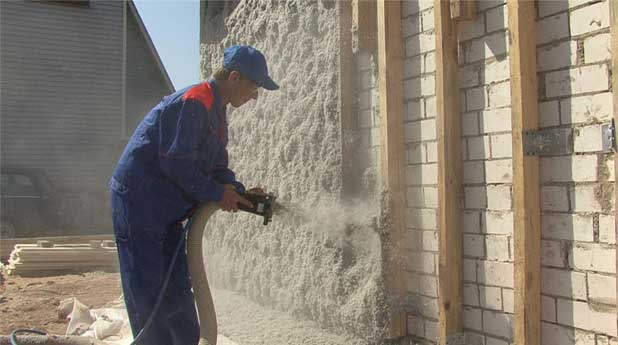

The main characteristics of ecowool:
- Insulation belongs to the category of moderately flammable materials. When exposed to open fire, it does not melt; if the ignition source is removed, attenuation is observed.
- Average density - up to 55 kg / m³.
- Thermal conductivity - up to 41 W / m * C.
- The price includes work on applying the material - from 600 rubles. For 1 m² at a thickness of 100 mm.
Ecowool is advisable to use for large amounts of insulation.
Criteria for selecting the optimal insulator
Finding out what kind of insulation mice do not live in, one cannot start only from the factor of resistance to rodents: it is important that the material fulfills the function expected of it - it protects against heat leaks and helps maintain a comfortable microclimate. When choosing, you need to pay attention to the following indicators:
- coefficient of thermal conductivity;
- fire safety and fire resistance;
- durability;
- breathability;
- the degree of sound insulation created;
- environmental safety;
- waterproofness;
- biostability.
According to homeowners' experience, there are not many materials that are not tolerated by mice and rats. Expanded clay is considered the best in this regard, but it is problematic to insulate vertical structures with it. Polyfoam, on the other hand, is completely destroyed over the years.
When looking for a suitable option, it is very important to study the technical characteristics indicated on the packaging, to make sure that the goods are in good condition.
Looking for an alternative
Most of these home insulation options are effective against rodents, but have a higher cost and laborious installation.Therefore, with a high risk of pest infestation and a limited budget, it makes sense to use alternative methods of protection.
For example, mineral wool or other types of cotton wool and polystyrene are recommended to be purchased with additional treatment with special deterrent impregnations. Here it is important to use the services of a reliable company to be sure that the declared impregnation has actually been carried out.
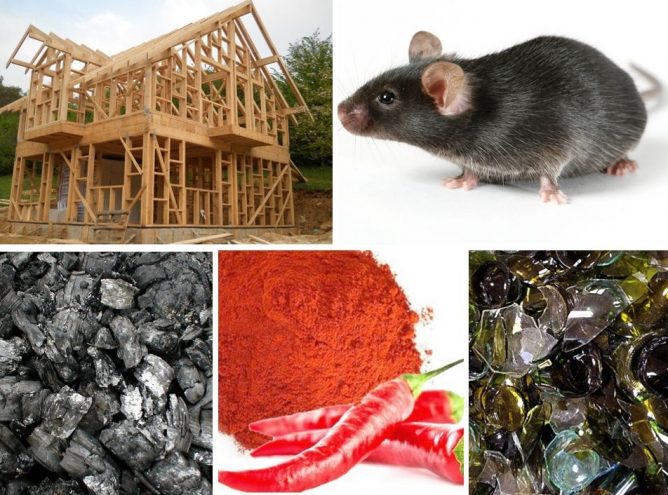

Or, you can add crushed glass to the assembly solution. Once in the gastrointestinal tract of pests, it will cause severe injury and lead to the death of rodents. Sometimes a combined method of protection is used: the outer layer of the isolate is chosen from those that are not damaged by mice, then a budget insulation is laid.
You can use another method, but it is more expensive: cotton wool or other insulation is reinforced with a fine metal mesh, which rodents will not master.
In any case, the choice is wide enough today.
Ways to protect heaters
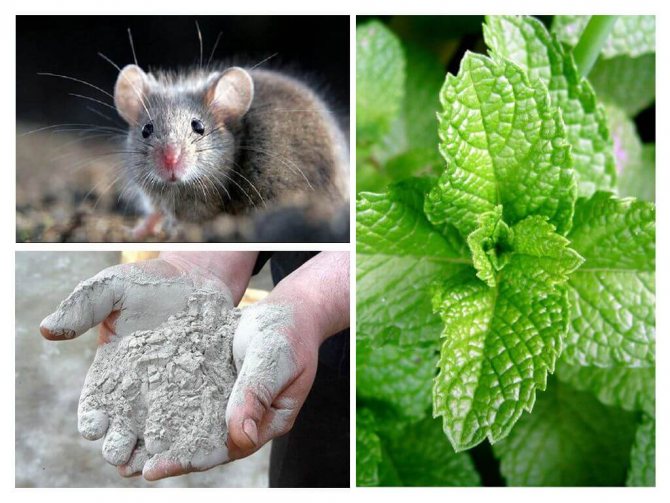

Mouse mint
If material that is unpleasant for mice is used as upholstery, this does not mean that rodents will not settle in the house. You want to know about several possible ways to protect insulation from rodents.
An important condition is the implementation of preventive measures before installing insulation and construction.
- If the mice are already in the house, then a repeller will become a reliable means of fighting the pest. The device works by using ultrasound, which sends out unpleasant signals audible by parasites. The device will help expel not only mice, but also ants, cockroaches and other insects.
- The most popular and effective method is the use of a metal mesh.
- Folk methods offer many effective and safe recipes. Among them, plants are especially popular: mint or wormwood. The grass is dried and laid out indoors. Mice and rats have a keen sense of smell, so they clearly feel the scent that they don't like.
- Boric acid is used as a processing agent. Rodents try to avoid contact with the substance, so the structure is safe.
